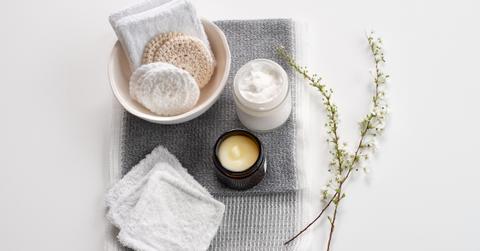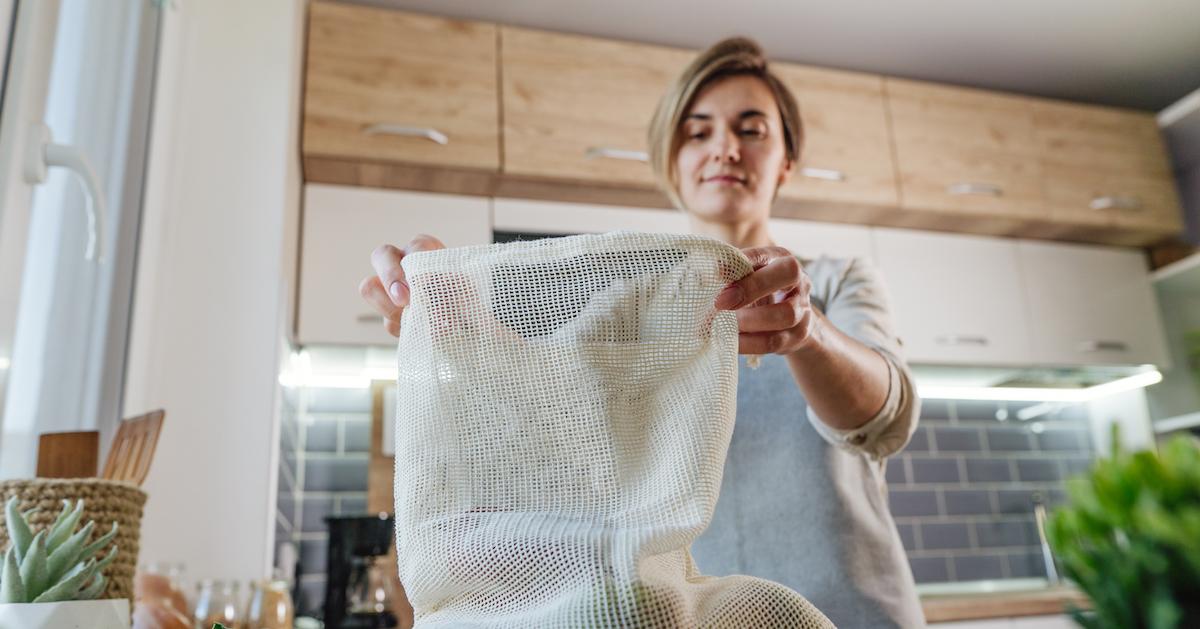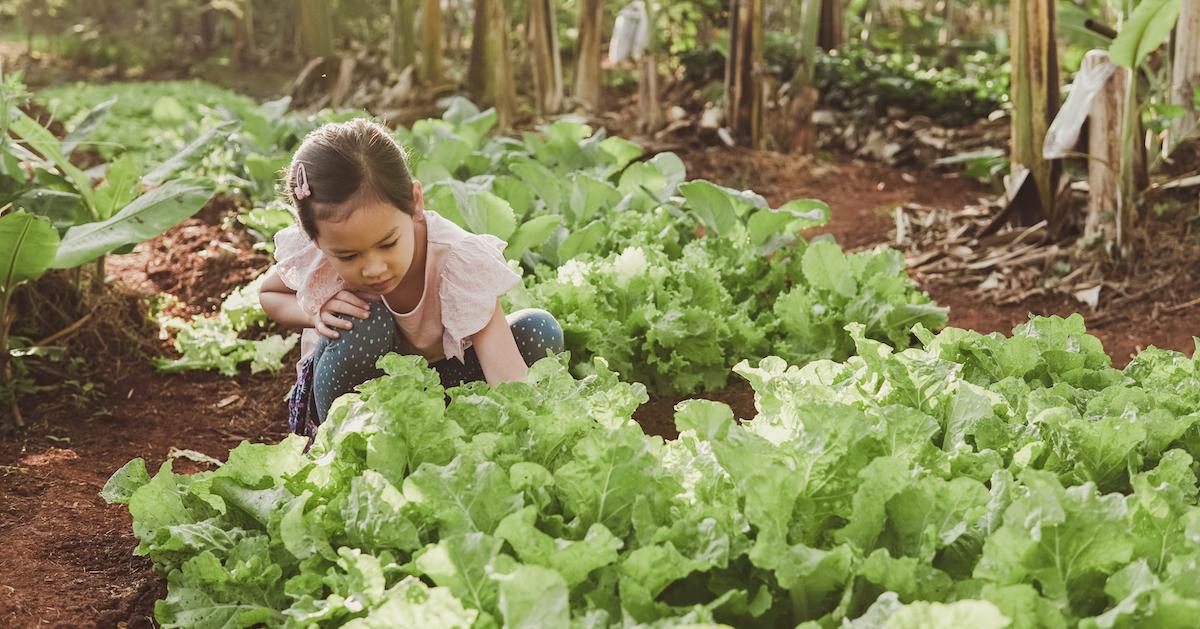Plastic Free July: 5 Tips for Reducing Disposables for the Summer Challenge
Your actions can make a difference.
Updated June 27 2023, 5:15 p.m. ET

The zero-waste movement goes on every day — but if there's any time to get started, it's now. For the entire month of July, people all over the world will take part in Plastic Free July, a global challenge to reduce personal consumption of single-use plastic. The prospect of not using any plastic for an entire month may sound impossible — and unfortunately, it pretty much is. But that's not meant to be discouraging.
It's meant to show that Plastic Free July isn't about perfection (and neither is the zero-waste movement), so don't let the fear of not being perfect hold you back from trying. Instead, it's all about reducing plastic in a way that works for your lifestyle — while still challenging yourself, of course.
Plastic Free July first began in Australia in 2011. In 2017, the campaign's founder Rebecca Prince-Ruiz and a group of people from her local government formed a nonprofit called The Plastic Free Foundation, which is the official organization that runs Plastic Free July. In 2018, a total of 120 million people participated — and 90 percent of those participants made permanent habit changes beyond July, according to Green Queen.
On Plastic Free July's website, people can take a pledge to participate in a variety of ways. You can pledge to observe the challenge for just one day, one week, the entirety of July, or for July and beyond. You can also pledge to reduce your plastic in a few different ways: you can avoid single-use packaging, you can avoid the "big four" (more on that later), or you can aim to go completely plastic-free. Additionally, you can pledge to making these changes on a personal level, at your work, at your school, at an upcoming event, in your community, or anywhere else you are involved.
Basically, Plastic Free July doesn't have to be an intimidating phrase, and if the month helps open your eyes just a bit more to the plastic pollution epidemic, you'll be able to consider it a success. And single-use plastic is a pretty significant problem at the moment, meaning there's no better time to get involved.

What's the problem with plastic?
Plastic is derived from fossil fuels, making the material a nonrenewable and unsustainable resource. Plastic has only been in use since 1907, and it has become the preferred material for just about everything, from bags to straws to food packaging to water bottles to wipes to diapers. And all of the plastic that has come into existence over the past century is still on Earth.
Plastic is not biodegradable — it is either downcycled into new plastic (but only 9 percent of plastic actually gets recycled), it sits in a landfill emitting methane, or the sun breaks it down into microplastics. And considering the impact that plastic pollution and drilling for fossil fuels has on the environment, it's so important to focus on reducing plastic use on Earth as much as possible.
Before the plastic boom in the 1960s, people all over the world got along just fine without single-use plastic — so we can now, too. Plastic Free July's website is full of tips for getting started, on maintaining a plastic-free habit, and on instituting changes in your community.
Here are five of our favorite tips for reducing your plastic use this Plastic Free July.
1. Tackle the "Big Four."
According to blogger Kathryn Kellogg from Going Zero Waste, a great place to start is with the Big Four: plastic bags, water bottles, straws, and coffee cups. These changes are all much easier than you think — it's just a matter of replacing your existing habits with new habits. Make it part of your daily routine to pack a tote bag, a reusable water bottle, a reusable straw, and a reusable coffee cup on any day where there's a chance you'll buy something or need a coffee.
For more ideas, click here for replacements for 16 of the most common disposable home products.
2. Look at your trash.
Once you've mastered the Big Four, you'll be more than ready to reduce waste in other areas of your life. It may sound icky, but next time your trash cans are full, take a comfortable seat on the floor and look through the contents.
See a ton of takeout containers and utensils? Start bringing your own containers to restaurants to pack your leftovers or to pack a takeout order, and carrying around a set of reusable utensils. Notice a ton of baby diapers and wipes? Consider investing in cloth diapers and reusable wipes.
Notice a lot of food packaging? Acquaint yourself with a grocery store's bulk section, or start centering meals around produce and other foods that are typically sold plastic-free. See a lot of plastic shrink wrap or plastic baggies? Use a reusable alternative like wax wrap, Stasher bags, or good old Tupperware containers.
For the record, Plastic Free July has nothing against using reusable plastic that you already have, such as Tupperware or a Nalgene bottle. What we need to focus on is reducing single-use plastic — something that is used once but stays on the planet forever. That said...
3. Go beyond single-use plastic.
As you begin to master replacements for single-use items, take things a step further and look at other items you regularly buy that typically come packaged in plastic. For example: toothpaste, dish soap, ketchup, online shopping orders, lotion, and sponges. There's a plastic-free alternative out there for everything.
One of the best ways to reduce your plastic use in the upstream (aka the plastic you don't see) is by eating less fish. According to a study published in Scientific Reports, fishing nets account for at least 46 percent of ocean plastic in the Great Pacific Garbage Patch, with most of the remainder consisting of other fishing paraphernalia, such as eel trap cones and oyster spacers. So by eating plant foods instead of fish, you are lowering your environmental impact and your contribution to ocean plastic.

4. Go beyond yourself.
Plastic Free July's website encourages participants to spend some time in July on reducing plastic in their communities — whether that's at your place of work, your school, your neighborhood, your gym, your apartment building, or anywhere else you frequent. Because while committing to drinking your morning coffee from a reusable mug every morning is great, getting your office's kitchen filled with mugs so that all of your coworkers can drink from reusable coffee cups is even better.
5. Spread the word.
Step outside your comfort zone this month by talking about Plastic Free July with your friends, family, coworkers, barista, and that stranger in the grocery store who's staring at your reusable produce bags with a confused face. Keep a positive attitude, and tell people in your life how excited you are to be reducing your contribution to plastic pollution this month. You can also spread the word on social media using the hashtag #PlasticFreeJuly.
This article, originally published on July 1, 2020, has been updated.